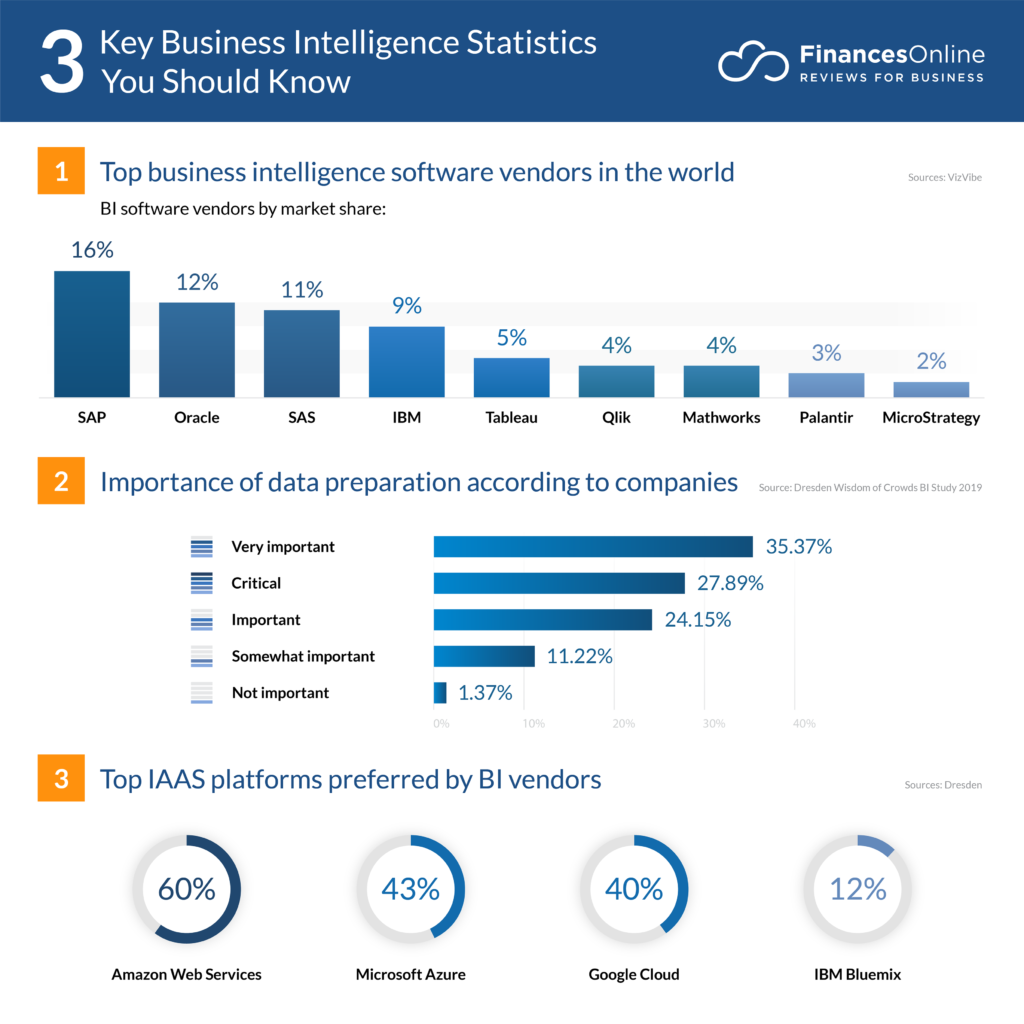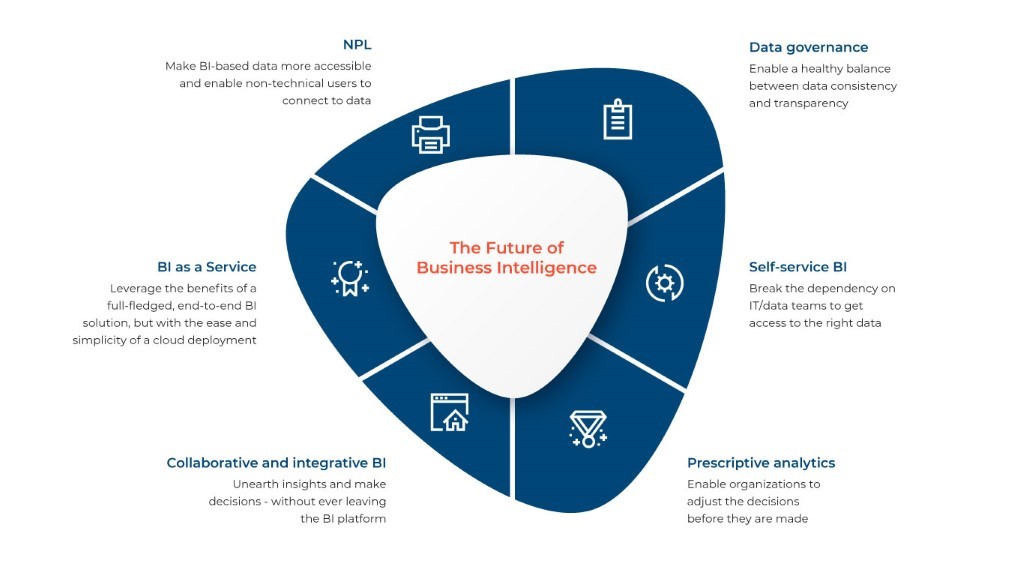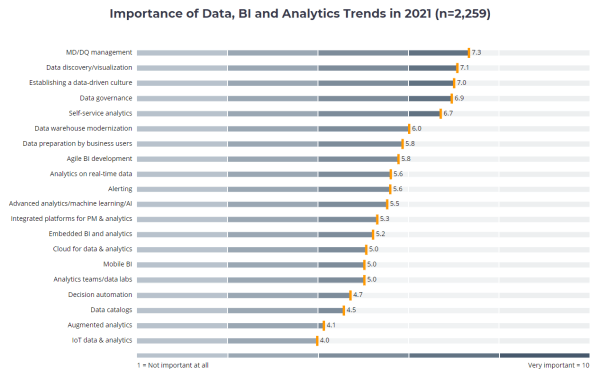Learn about the Upcoming Trends in Business Intelligence 2021

“Data is a precious thing and will last longer than the systems themselves.”
Tim Berners-Lee, inventor of the World Wide Web.
Today, data is everywhere and companies are relying on it for their every process. For instance, data can be used to improve operations, enhance employee satisfaction, understand customer behavior, optimize the supply chain, enable predictive maintenance, and so much more.
However, raw data is of no use if important information can’t be extracted from it. And, with massive volume, variety, and velocity of data, companies will generate the best outcomes from data only by embracingBusiness Intelligence(BI).
In the year 2020, we have seen massive changes in the fundamental structures of organizations. With the pandemic and its resultant lockdown, people started spending more time on the internet and data exploded.
As traditional methods failed, modern BI tools open up a world of new opportunities. They empowered them to unearth new insights and become more proactive. The capabilities of BI tools drive the growth of the BI market which is estimated to be$33.3 billionby 2025.
Business intelligence has become a constantly evolving field. From the beginning, BI was confined to spreadsheets, however, with today’s technology we can easily access insightful visualization. Currently, BI has provided business organizations with new ways to increase profits, improve productivity, and understand customers.

With the rapid growth in technology and data, the future of BI looks promising. However, even if you realize the value of BI, being aware of upcoming trends and understanding how they can be incorporated is equally important.

In this blog, we are going to take look at what is the future of business intelligence and what can we expect from it in 2021.
What are the Emerging Trends in Business Intelligence?
Data Governance
In the future, data governance will become a top priority for organizations as regulations around data privacy became more stringent. Today, as data quality management has become indispensable for business excellence, we will organizational efforts to classify data.
The organization will know where the data is coming from, how people are using it, who has access to it, and how long they can keep it. This information will be driven by the number of data sources and data types to support analytics.
Data governance strategy will help increase ROI while enabling a balance between data consistency and transparency from BI investments. This will set the foundation of ethical, accurate, and evidence-based decision-making.
Data governance will allow business organizations to understand the information, improve data quality, and ensuring privacy.
Finally, the organization will be able to ensure data is acquired securely from approved sources, shared with authorized personnel, processed for the intended purpose, and discarded as per a pre-defined timeline.
Self-Service BI
In the past few years, self-service BI already gained popularity and will become a norm in the future.
Today, business businesses have become tech-savvy and they expect access to the data anytime and anywhere. They also want to solve their issues without depending on the analytics team.
Self-service BI will enable users to get insight to tackle business problems. It will help the optimization of decision-making capability.
The self-service data model will enable business organizations to become self-sufficient as they know what they want.
In the future, self-service BI will break the dependency on IT/data teams to get access to the right data. Organizations will be able to meet their analytical requests to make critical decisions faster.
Prescriptive Analytics
Predictive analytics is an emerging trend in business intelligence and in the future, we will see it becoming a worldwide feature.
Predictive analytics enables business organizations to extract crucial insights from existing data to forecast future probabilities.
Organizations will use BI analytics to examine data and determine the steps required to achieve any goal. It will enable them to adjust their decisions by gauging the impact on future decisions. Hence, it will be improving the accuracy of decision-making.
In the next few years, organizations will use prescriptive analytics to extract information about available resources, possible situations, past performance, and so on. This information will then help them find the best course of action or strategy.
Collaborative and Integrative BI
In the future of business intelligence, the business landscape will witness collaborative and integrative BI becoming mainstream. Unlike today, the enterprise will have systems with built-in BI capabilities. It will help them unearth crucial insights and make decisions without the need to leave the platform.
The next-gen systems will continuously pull data from the sources, analyze it, consolidate it, and present it to users with insights. Besides, these systems will be capable of sending alerts and updating the data at hand.
These systems will allow teams to carry out operations and decision making through exploration by becoming embedded in workflows.
Besides, they will be allowing data analysis within existing systems and integrate them with third-party seamlessly. This will pave way for a data-driven culture.
Data visualization
In the past few years, data discovery has increased its impact on business organizations. According to a survey by the Business Application Research Center here is a list of the top business intelligence trends in data discovery.

Data discovery tools depend on a process to generate insights that can bring business value. However, it requires understanding the guided advanced analytics.
Today, with the help of data visualization tools, organizations can make informed decisions. Hence, it has become an invaluable resource to produce relevant insights.
Business users require software that is:
- Easy to use
- Agile and flexible
- Reduces time to insight
- Allows easy handling of a high volume and variety of data
Data visualization has evolved as a state-of-the-art solution that helps interact with data in the form of graphics and images. It doesn’t matter which type of data you need to focus on. Data visualization has manytypes of Power BI Dashboard.
In the future, data discovery trends will find increase as power bi latest trends in 2021 as humans process visual data better than numbers.
SaaS BI
SaaS BI is an emerging trend in business intelligence that has seen a great shift in the last year. In the future of business intelligence, we will see it shape business operations.
With the huge shift to remote working, many businesses have turned to SaaS BI. They see SaaS BI as a medium to access the data on the cloud and gain more flexibility.
SaaS has become one of the best tools for remote working to optimize business processes and remove bottlenecks. We can huge investments, in theForbes’ Cloud 100 list, in SaaS, databases, automation tools, and fintech companies.
SaaS BI enables data movement and access to multiple places. Hence, this technology will continue to rise as the most important BI trends in 2021.
Mobile BI
The future of business intelligence is mobile BI. Last year, we have seen it being more and more incorporated into BI solutions. It is still one of the emerging trends in business intelligence.
in the year 2021, we will be seeing more mobile BI solutions with the option within their software such as modern mobile dashboards and others. They will be rapidly implemented as mobile solutions provide numerous benefits such as accessing information anytime and anywhere, reduce the need for physical presence, access data in real-time, ensuring faster reactions, and gives more freedom overall.
While companies are still facing some challenges while implementing mobile BI such as limited screen size, interface design, and usability, it is undoubtedly going to be BI trends 2021.
Data Automation
A list of BI trends of 2021 cannot be completed without data automation. Today, we produced and stored data every data which then becomes ready to process. To give you an idea, we produce2.5 quintillion bytes of data every day.
To process these massive volumes of data, companies need modern data automation solutions. Hence,a KDNuggets surveypredicts that in the next decade, data science will automate most of the operations.
Mobile BI has become the solution to enable users to consolidate all the data. It provides different methods to discover, monitor, measure, analyze, and evaluate large scale data.
Conclusion:
In the future, all organizations will be data-driven. But, being data-driven is not just about storing data. It is about extracting crucial insights and using them in your business operations. This is precisely why organizations need to keep track of business intelligence trends in 2021.
In the year 2021, we will be looking past the hype and moving towards the maximum value from business intelligence software. Hence, it becomes very crucial to keep up with the business intelligence trends 2021 in your business intelligence journey.
 Author Bio:
Author Bio:
Shreeya Chourasiais an experienced B2B marketing/tech content writer, who is diligently committed for growing your online presence. Her writing doesn’t merely direct the audience to take action, rather it explains how to take action for promising outcomes.






